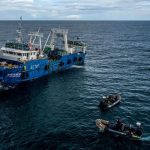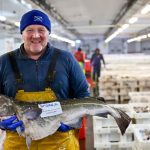It is difficult to tame the Atlantic salmon, a carnivorous fish that cruises the open oceans and needs to eat many times its own weight in smaller fish and marine animals? A tiger of the seas. Joshua Goldman, working in the unlikely setting of a collection of warehouse-like buildings in an industrial park near an airport in Turners Falls, a village in western Massachusetts’s Pioneer Valley, is attempting to undo fish farming’s fundamental wrong turn. After raising striped bass in the 1990s, Goldman, who is the chief executive officer of Australis Aquaculture, began a three-year quest for a better fish. After looking at more than 50 candidates, he chose the barramundi, a native of Southeast Asia and northern Australia that in some ways resembles members of the bass family.
According to Goldman barramundi are the anti-salmon. They are born in the sea and migrate to fresh waters as adults, the reverse of a salmon’s lifecycle. The sluggish rivers they call home are subject to frequent droughts, forcing barramundi to form tight schools in tiny pools left in otherwise dry riverbeds. Huge gills enable them to live in oxygen-deficient water.
Land-locked Australis uses what is called a recirculating system. Water is drawn into the facility from wells fed by the nearby Connecticut River. It flows through the fish tanks and then is cleaned in a treatment plant and sent back to the fish. Every gallon Australis uses is recycled 300 times. Solid waste is separated out and goes to local farms as fertilizer.








